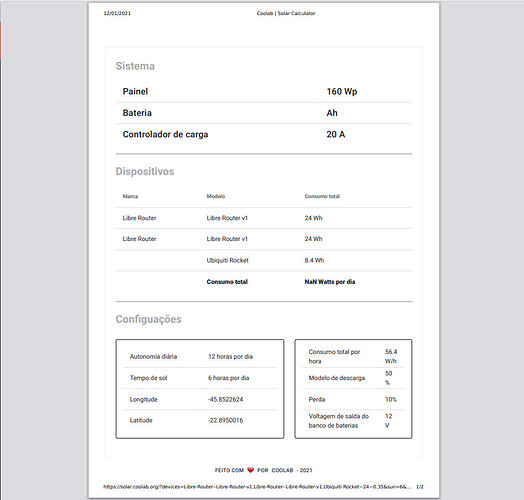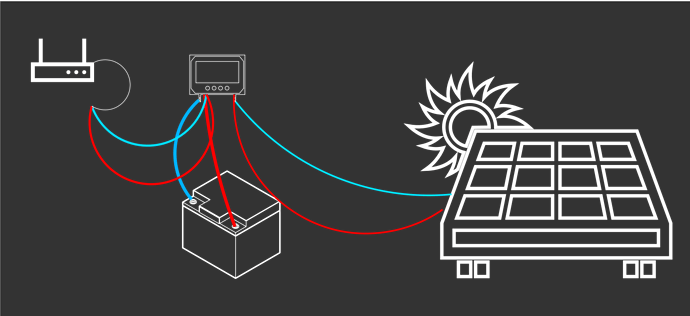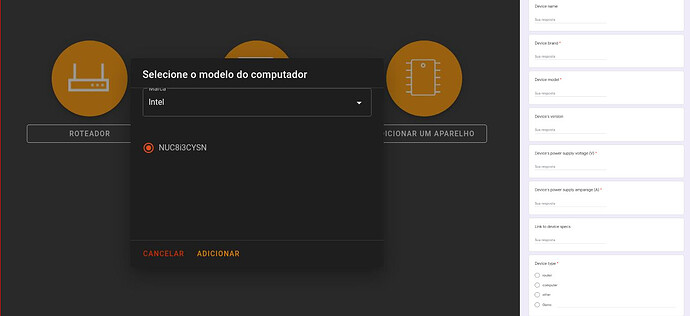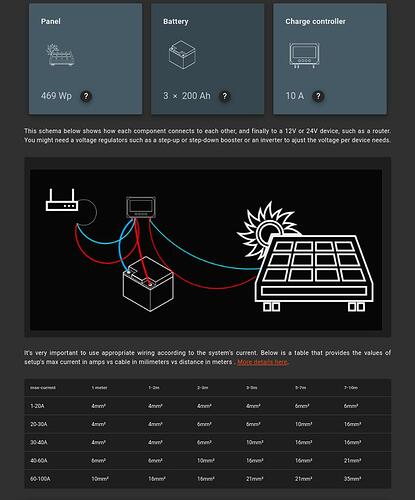Solar Calculator
Updated: 29/04/2021
TL&DR A tool we built at Coolab, check it out at https://solar.coolab.org
contribute by adding more devices here and helping with translations here
We realized that one of the biggest barriers to adopting solar energy is the difficulty in accessing knowledge about what equipment that’s needed for these systems and how to scale them.
Therefore, with the support of APC, we have developed a web application that seeks to help technicians and non-technicians in the most intuitive way to design their own systems.
How to use
1. Understand how it works
It is important to understand that by simplifying the variables used in a solar calculator as much as possible, we lose accuracy. So it is good to better understand how this system works and how the installation process is.
2. Choose devices
We made a selection of the most used devices for mesh communication networks, using Libre Router OS and also some other equipment used for long-distance point-to-point links.
Just select the devices that will compose your system and we will use the consumption information to calculate. If the router or computer you’re looking for isn’t in the list, please consider collaborating to our list of devices.
There’s also the option to add custom devices, as long as the user inputs its consumption information.
3. Define the location’s solar radiation
We provide a summarized version of the Solarimetric Atlas of Brazil to take as a basis the average hours of sunshine in different seasons. This won’t be useful for people outside Brasil, so it’s up for users to find out the availability of sun hours at their location. Make sure to take into account the month with the least solar radiation, as we want the system to work all year long.
We must also be aware of the exact location where the devices will be installed, as factors such as shade of trees, hills and buildings influence the availability of sun.
4. System autonomy and options
A system with less than 24 hours of autonomy is cheaper, but it will not guarantee the functioning of the devices at all times.
It is important to note whether the location where the system will operate has many cloudy days during any season. In such cases it is prudent to place an autonomy of a few days.
From the advanced options, the discharge and loss model must be modified to be more or less conservative in the calculations.
It is worth changing the battery bank output for devices that need 24V or 48V for example, reducing the need for voltage regulators or inverters.
5. Results
At the end, the application shows the specifications of the devices needed for the system based on the entries made by the user. It allows you to share these results through a url, and also print it as a pdf .
The brand of used devices influences durability. In the case of charge controllers, it is important to note in the device manuals whether the maximum voltage of the panels is not above that supported by the controller.
Controllers with MPPT technology are more efficient and are often worthwhile. But be aware if the device is very cheap and claims to be MPPT, as it is probably fake.
Due to the diversity of panels available on the market, we chose not to segment them in the case of systems with consumption above 400Wp. If one panel is not enough for the system, just buy more panels that add up to the required value in Wp (peak watt) and place them in parallel. But be aware and better understand the difference between serial and parallel connections, as it may be necessary if your system is large.
This is how the different parts of the setup connect to each other in the end:
It’s very important to use appropriate wiring according to the system’s current. Here’s a table that provides the values of current in amps x cable in milimeters:
| Min. Cable diameter | 1.5mm | 2mm | 2.5mm | 3mm | 4mm | 5mm | 6mm | 7mm | 10mm |
|---|---|---|---|---|---|---|---|---|---|
| Max. Current | 10A | 15A | 20A | 30A | 55A | 75A | 95A | 130A | 170A |
Next steps
Access the calculator at https://solar.coolab.org
Please open up issues or suggest improvements through the repository: Coolab / solar-calculator · GitLab
We send your opinion at [email protected].
Upcoming versions
In the process of building this tool we better understood the variables involved in such systems and how in the future we can use them to give more precision to low and high consumption projects.
Some improvements we thought for a second version:
More devicesAdded in v1.1Other languagesAdded in v1.1- Calculate solar radiation using map position and Solcast service or suntime calc suggested by @nicopace
- A more accessible experience outside the Brazilian territory
- Add calculators for cables
Originally posted in Portuguese at Coolab!





